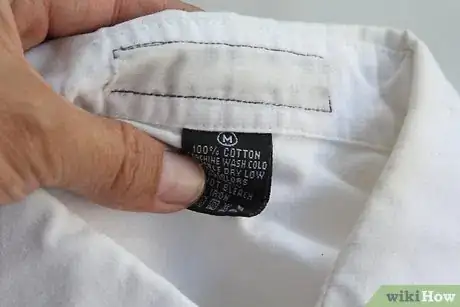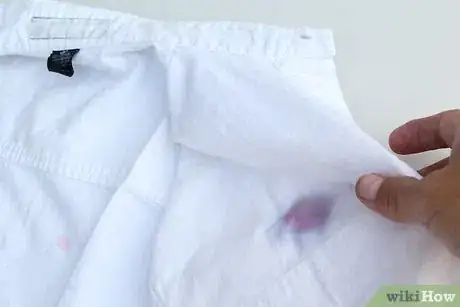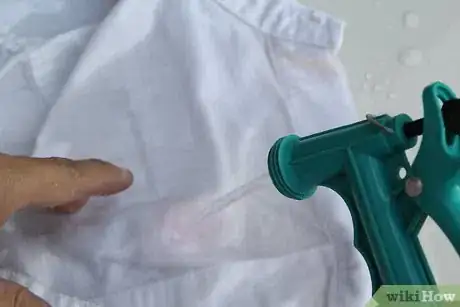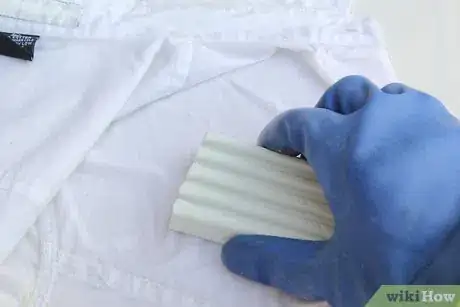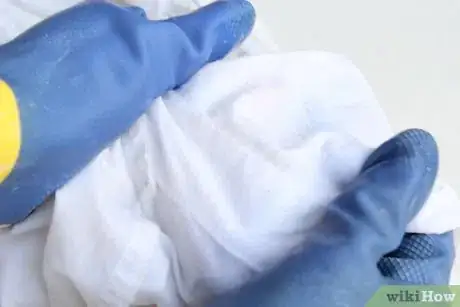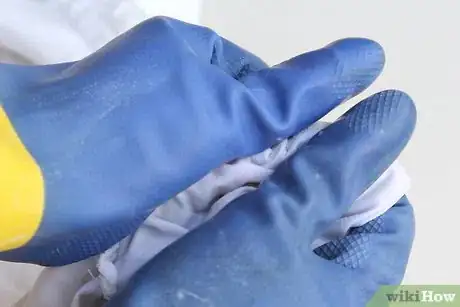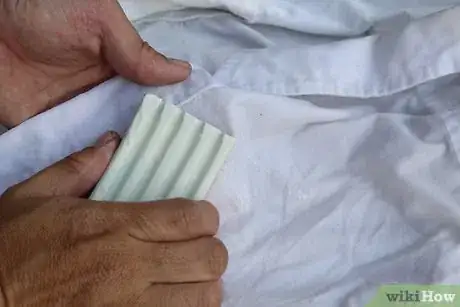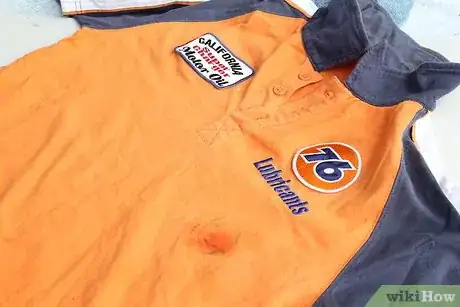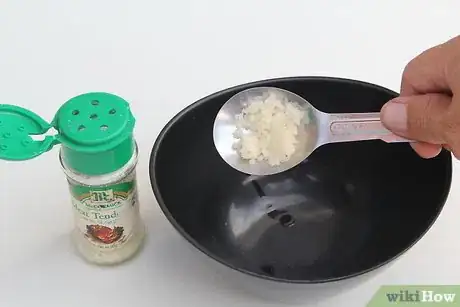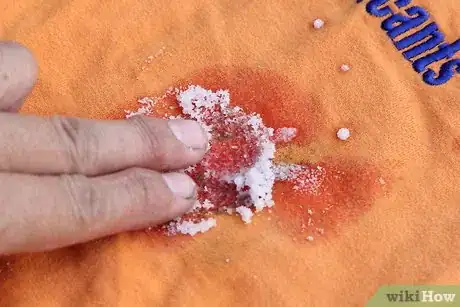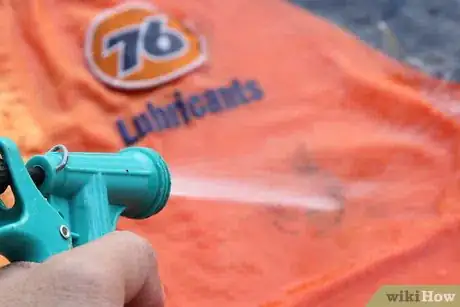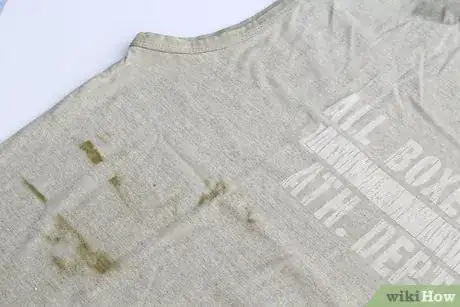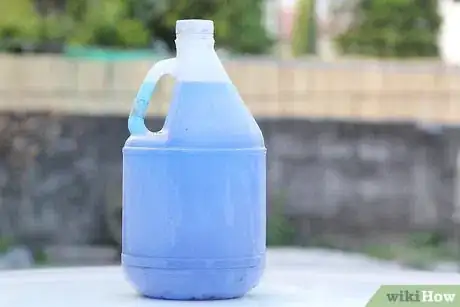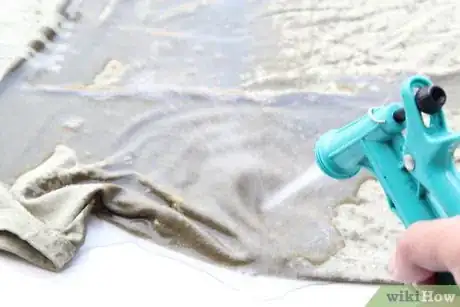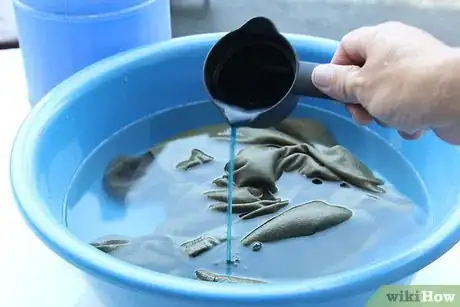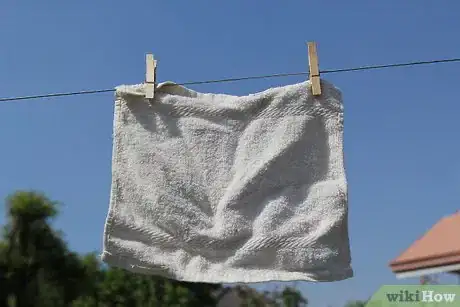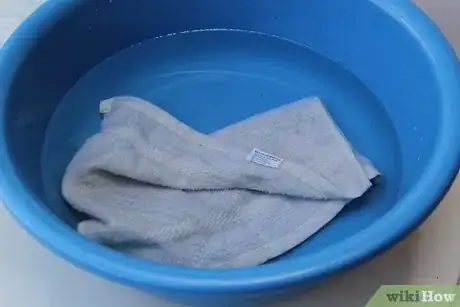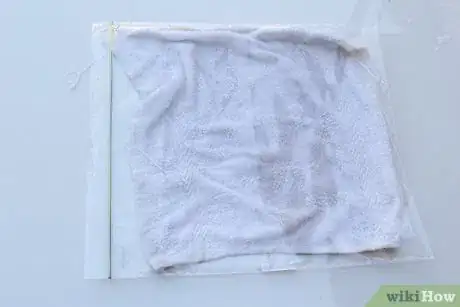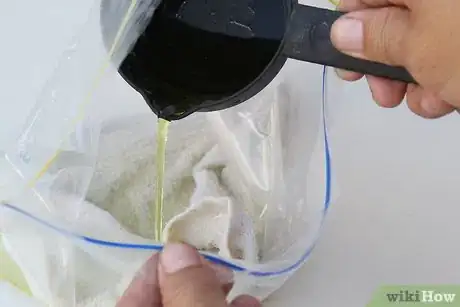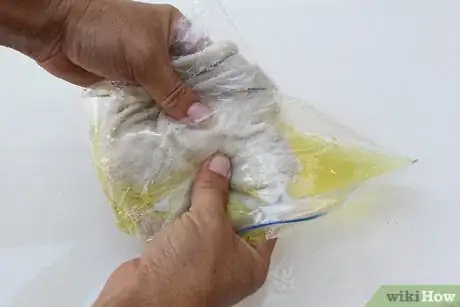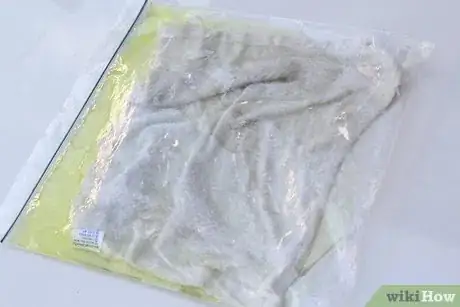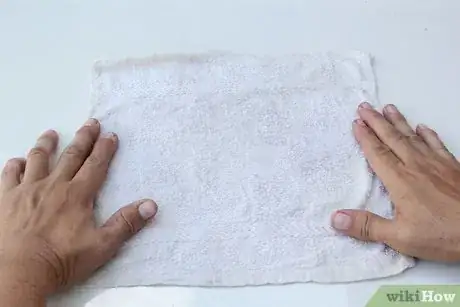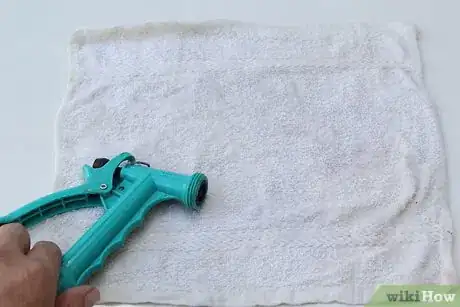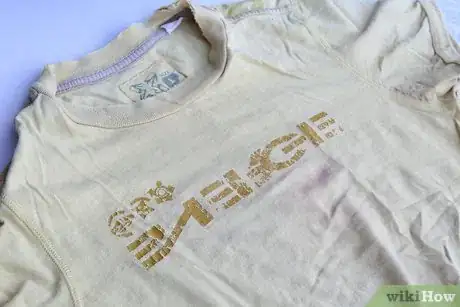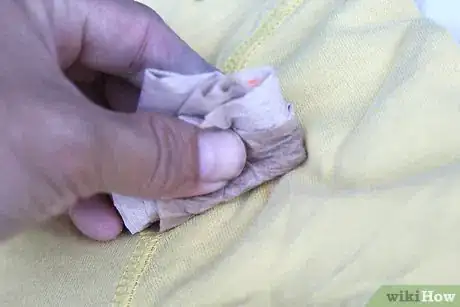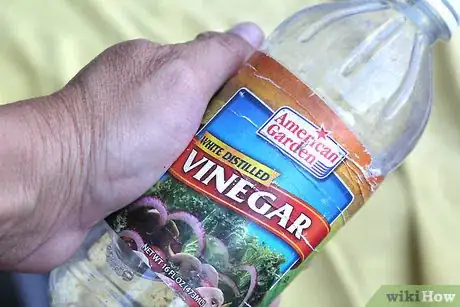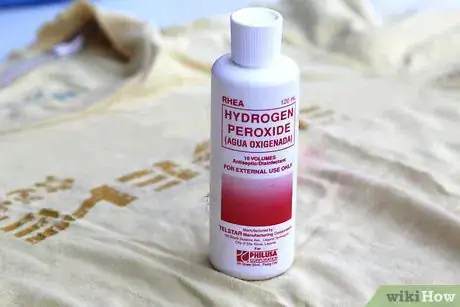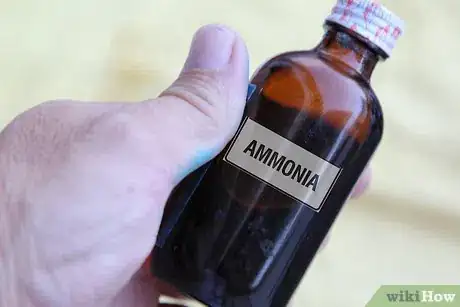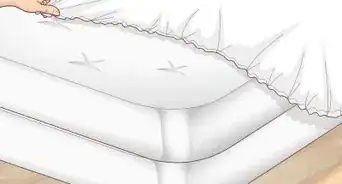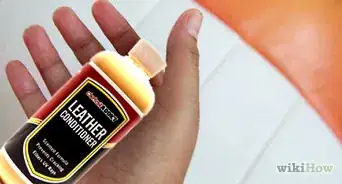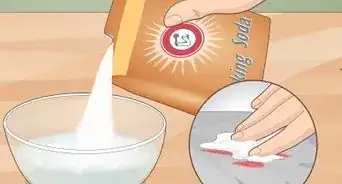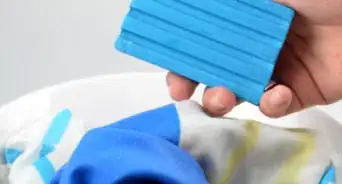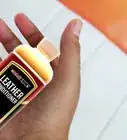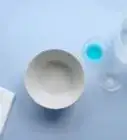This article was co-authored by Elias Weston. Elias Weston is a Cleaning Specialist and the Founder of Seatown Cleaners in Seattle, Washington. Elias specializes in helping clients find cleaning services with instant booking and flexible pricing. Seatown Cleaners offers standard, deep, and move-in/out cleaning services using green products and cleaning techniques. Every cleaner is thoroughly vetted and every cleaning is backed by a 100% money-back guarantee.
There are 8 references cited in this article, which can be found at the bottom of the page.
wikiHow marks an article as reader-approved once it receives enough positive feedback. This article received 27 testimonials and 95% of readers who voted found it helpful, earning it our reader-approved status.
This article has been viewed 3,161,295 times.
Removing blood stains from fabric is easiest when the stain is wet, but it’s still possible if the stain dried already. The key is to act quickly and avoid washing and drying the fabric until the stain is completely gone.
Steps
Scrubbing with Soap and Water
-
1Use this simple method primarily for linen and cotton. This method requires no special tools, but does take a significant amount of prolonged rubbing. It is especially suited to stains on natural fibres such as linen and cotton. Fabrics whose surfaces fragment into small round surface balls, known as "bobbles" or "pills," require a longer period of more gentle rubbing. These fabrics include wool and most artificial fibres.
-
2Turn the fabric so the stain is face-down. In this position, water can work at the stain from the back, pushing it outward and off the fabric. Rinsing in this position is more effective than running the water directly onto the stain.[1]
- You may need to turn clothing inside out to achieve this.
Advertisement -
3Flush the stain with cold water. Even an old stain typically hasn't worked its way into the fabric completely, so start by removing the loosely attached surface portions. Run cold water over the back of the fabric, so it pushes through the stain. Hold the fabric in the running water for several minutes, and the stain should be at least slightly smaller.
- Warning: never wash a blood stain in warm or hot water, which may cause it to bond permanently to the fibres of the fabric.[2]
-
4Rub soap into the stain. Turn the fabric over so the stain is face-up. Rub bar soap into the stain generously, to produce a thick lather. Any soap can be used, but traditional solid block laundry soap may have a stiffer, more effective lather than milder hand soap.
-
5Grip the stained area with both hands. Roll or scrunch up two areas of fabric, on either side of the stain. Grip one in each hand to provide a good grip on the area, allowing you to rub it together.
-
6Rub the stain against itself. Turn the two handfuls of fabric so the stain is in two halves and facing each other. Rub the stained fabric against itself vigorously, or gently but quickly if the fabric is delicate. The friction you generate should slowly loosen the remaining particles of blood, which will remain in the lather rather than re-adhering to the fabric.
- Gloves may be worn to protect the skin from abrasion or blisters. Tight-fitting latex or nitrile gloves may provide the least hindrance to grip and dexterity.
-
7Periodically replace the water and soap and continue rubbing. If the fabric starts getting dry or losing its lather, flush the stain with fresh water and re-apply the soap. Continue rubbing each stained area in this way until it is gone. If you see no improvement after five to ten minutes, try rubbing more vigorously or move on to a different method.
Using Meat Tenderizer
-
1Use this on any fabric, but cautiously on silk and wool. Meat tenderizer powder, sold in grocery stores, can break down the proteins found in blood stains. While it is recommended by some silk experts, meat tenderizer does have the potential to break down silk and wool fibres as well.[3] Test this method on a small corner of these fabrics first, to see if damage occurs.
-
2Wet unseasoned meat tenderizer. Put about 15 mL (1 tbsp) unseasoned meat tenderizer into a small bowl. Gradually add water while stirring until a thick paste is formed.
- Do not use seasoned meat tenderizer, as the seasonings may stain your fabric.
-
3Rub the paste gently into the fabric. Spread the paste on the dried blood stain and gently rub it with your fingers. Let it sit for about an hour.
-
4Rinse out the paste before washing. After the hours is up, rinse the paste out with cold water. Wash the fabric as usual, but air dry rather than using a drier, since the heat can cause remnants of the stain to set permanently.
Using an Enzymatic Cleaner
-
1Do not use this method on wool or silk. Enzymatic cleaners break down proteins that form stains. Since blood stains bond to the fabric using proteins, enzymatic cleaners can be highly effective at removing them. However, wool and silk fibres are made from proteins, and may break apart if exposed to an enzyme product.[4]
-
2Find an enzymatic cleaner. If you are having trouble finding a cleaning product labeled "enzymatic" or "enzyme cleaner," try a "natural" or "earth-friendly" laundry detergent or laundry pre-treatment, which often contain biodegradable enzymes.[5]
- Nature's Miracle and Seventh Generation laundry detergent both fall in this category.
-
3Flush the fabric with cold running water to loosen some of the dried blood. Agitate the fabric with your fingers to help scrape off the crusted material, or scrape it off using a blunt knife.
-
4Soak the fabric in cold water and enzymatic cleaner. Dissolve about 120 mL (1/2 cup) of the cleaner in a bowl of cold water, then submerge the stained fabric. The soaking time will depend on how old the dried blood stain is, and how strong the cleaning product is. Soak at least one hour, or for as many as eight.
- Optionally, scrub the cleaner into the stain with a toothbrush before submerging.
-
5Wash the fabric and let dry. Wash the fabric as usual, but do not put it in the drier, which may cause the blood to permanently set. Let it air dry, then check whether the stain is still present.
Using Lemon Juice and Sunlight
-
1Use this method in sunny weather. This method uses common ingredients, but requires sunlight to finish the process. You will also need to wait for the fabric to air dry before you can tell whether the stain was successfully removed, making it slower than most other methods.
- Warning: lemon juice and sun are both capable of harming delicate fabrics, especially silk.
-
2Soak the stained fabric in cold water. Submerge the fabric in cold water for a few minutes. While it is soaking, gather up the other materials you will need. This includes lemon juice, salt, and a zip lock plastic bag large enough to contain the clothing.[6]
-
3Wring the clothing gently and transfer it to a bag. Twist the clothing to remove some excess water. Untwist it and transfer it into a large, resealable plastic bag.
-
4Add lemon juice and salt. Pour about 500 mL (2 cups) lemon juice and 120 mL (1/2 cup) salt into the plastic bag and seal it.
-
5Massage the fabric. With the bag closed, press the contents together to work the lemon juice into the fabric, focusing on the stained areas. Some of the salt should dissolve, and may help rub the lemon juice into the fabric, or abrade the stain itself.
-
6Remove the fabric after ten minutes. Let the bag sit for ten minutes. Take out the fabric from the bag and squeeze out the excess lemon juice.
-
7Dry the fabric in the sun. Hang the fabric on a clothesline or clothes horse, or spread it on a flat surface and leave it to dry. Do this in a sunny area, not just in front of a heater. It may feel stiff once dry, but this should go away once the item has been washed normally.
-
8Wash the fabric with water. If the blood stain is gone, wash the fabric with water to remove all the lemon salt solution. If the blood stain remains, moisten the fabric and let it dry under the sun again.
Trying Stronger Treatments
-
1Understand the risks. The substances used in this section are powerful stain removers. However, due to their strength, they may bleach your fabric or cause permanent damage to the fibres. These methods are best used on white, non-delicate items, or as a last resort after other methods have failed.
-
2Test on a corner of the item first. Once you've acquired one of the following solutions, use a cotton ball or paper towel to dab a small amount on a corner or hidden area of the fabric. Let it sit for five to ten minutes to see whether it stains your fabric.
-
3Consider using white vinegar. Vinegar is not typically as strong as the options below, but still has the potential to harm fabric. Soak the stained fabric in white vinegar for about thirty minutes, then rub the stain with your fingers as you rinse it in cool water.[7] Repeat if the stain is noticeably improved but still present.
-
4Try hydrogen peroxide. A 3% hydrogen peroxide solution, which is the strength it is typically sold at, can be poured directly onto the stain or applied with a cotton ball. Be aware that it will likely bleach colored fabric. Keep the fabric in a dark place for 5-10 minutes, since light breaks down hydrogen peroxide, then blot with a sponge or cloth.[8]
-
5Test an ammonia mixture instead. Start with "household ammonia" or "ammonia hydroxide," sold as a cleaning product. Dilute this with an equal amount of water, and leave it on the stain for fifteen minutes before blotting and rinsing. If your "test corner" showed signs of damage, you may wish to soak the fabric in a much weaker solution, such as 15 ml (1 tbsp) household ammonia, 1 L (1 quart) water, and a drop of liquid handwashing detergent.[9]
- Warning: ammonia may destroy the protein fibres that form silk or wool.
- Household ammonia is approximately 5—10% ammonia and 90–95% water.[10] Stronger ammonia solutions are highly caustic, and should be diluted even more.
Expert Q&A
-
QuestionCan I use baking soda for this?
 Elias WestonElias Weston is a Cleaning Specialist and the Founder of Seatown Cleaners in Seattle, Washington. Elias specializes in helping clients find cleaning services with instant booking and flexible pricing. Seatown Cleaners offers standard, deep, and move-in/out cleaning services using green products and cleaning techniques. Every cleaner is thoroughly vetted and every cleaning is backed by a 100% money-back guarantee.
Elias WestonElias Weston is a Cleaning Specialist and the Founder of Seatown Cleaners in Seattle, Washington. Elias specializes in helping clients find cleaning services with instant booking and flexible pricing. Seatown Cleaners offers standard, deep, and move-in/out cleaning services using green products and cleaning techniques. Every cleaner is thoroughly vetted and every cleaning is backed by a 100% money-back guarantee.
Cleaning Specialist Yes! Pre-treat the stain by soaking a clean cloth in cold water and gently blotting the area with it. Then, make a paste by thoroughly mixing 1/2 cup of baking soda with ¼ cup of liquid dish soap and 4 cups of water. Using a clean cloth, dip it into the foamy solution and soak the affected area. Take another clean, dry cloth and blot the area to lift the stain from the upholstery. Alternate between saturating the area with the baking soda solution and blotting with the clean cloth until the stain is gone. Make sure you check the manufacturer’s label for specific care instructions first since some materials can't be treated with water.
Yes! Pre-treat the stain by soaking a clean cloth in cold water and gently blotting the area with it. Then, make a paste by thoroughly mixing 1/2 cup of baking soda with ¼ cup of liquid dish soap and 4 cups of water. Using a clean cloth, dip it into the foamy solution and soak the affected area. Take another clean, dry cloth and blot the area to lift the stain from the upholstery. Alternate between saturating the area with the baking soda solution and blotting with the clean cloth until the stain is gone. Make sure you check the manufacturer’s label for specific care instructions first since some materials can't be treated with water.
Warnings
- Do not put the fabric in the dryer until you are sure that the stain is gone. The heat from the dryer may cause the stain to set on your fabric permanently.⧼thumbs_response⧽
- Always wear protective gloves when you are handling blood that is not yours. This is to protect you from the risk of catching blood-borne diseases.⧼thumbs_response⧽
- Never mix ammonia with bleach, as it creates extremely dangerous fumes.⧼thumbs_response⧽
Things You'll Need
One or more of the following:
- Soap (preferably solid block laundry soap)
- Household ammonia & liquid dish washing detergent
- Laundry detergent or pre-treatment containing enzymes
- Lemon juice, salt, and resealable plastic bag
- Hydrogen peroxide and cotton ball
- Unseasoned meat tenderizer powder
- White vinegar
References
- ↑ http://www.housecleaningcentral.com/en/cleaning-tips/stain-removal/blood-stain-removal.html
- ↑ http://www.housecleaningcentral.com/en/cleaning-tips/stain-removal/blood-stain-removal.html
- ↑ http://www.silksheetsguide.com/stains/
- ↑ http://www.acmehowto.com/cleaning/carpet-silk-wool.php
- ↑ http://www.getridofthings.com/household/get-rid-of-blood-stains/
- ↑ http://www.catalogs.com/info/how-to/how-to-remove-blood-stains-from-clothes.html
- ↑ http://www.housecleaningcentral.com/en/cleaning-tips/stain-removal/how-to-remove-dry-blood-stains.html
- ↑ http://www.housecleaningcentral.com/en/cleaning-tips/stain-removal/how-to-remove-dry-blood-stains.html
- ↑ http://web.extension.illinois.edu/stain/staindetail.cfm?ID=5
About This Article
To remove a blood stain from fabric, run cold water over the stain for a few minutes. Then, take a bar of soap or liquid dish soap and scrub it into the stain until it starts to lather. Rinse the soap off with cold water and repeat. If that’s not working, you can also try meat tenderizer, enzymatic cleaners, white vinegar, or hydrogen peroxide. Keep reading for information on how to use each of these products, as well as how to use natural lemon juice to clean your fabric!
